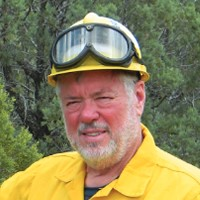Extreme Fire Events, Ecosystem Resilience, and Human Well-Being
A special issue of Fire (ISSN 2571-6255).
Deadline for manuscript submissions: closed (30 June 2019) | Viewed by 12936
Special Issue Editors
Interests: watershed hydrology; water resources management; forest hydrology
Special Issues, Collections and Topics in MDPI journals
Interests: dendrochronology; paleoclimatology; climate change; wildfire; drought; cave and karst environments
Special Issues, Collections and Topics in MDPI journals
Interests: plant physiological ecology; macroecology; fire behavior and effects
Interests: fuels; fire behavior; fire ecology; remote sensing; lidar; forest structure
Special Issue Information
Dear Colleagues,
This Special Issue intends to begin documenting the global occurrence of extreme wildfires, the conditions leading to them, their behavior, and their effects on ecosystems and humans. Recent scientific findings have bolstered hypotheses that climate change is aggravating wildfire conditions in many parts of the world, resulting in longer fire seasons, larger burned areas, higher fire severities, and increased impacts on humans. For example, areas affected directly by wildfires in the southwestern USA have increased dramatically from <10,000 ha yr-1 in the early 20th century to over 230,000 ha yr-1 in the first decade of the 21st century, with some of the burned landscapes now following divergent successional pathways to novel ecological conditions. A combination of drought, abnormal weather conditions, excessive fuel loads, invasive species, land-use change, and increased ignitions is producing the perfect conditions for fire-induced desertification in many parts of the world. Desertification is about the loss of hydrologic function, biological productivity, and other ecosystem services, and it now affects 75% of the Earth’s land surface and over a billion people. Some of the environmental consequences of extreme wildfires are vegetation injury and mortality, plant species and type shifts, exotic plant invasions, wildlife habitat destruction, soil erosion, floods, watershed function decline, water supply disruption, air pollution, and direct human impacts. All of these impacts affect human well-being directly or indirectly, and many will persist beyond the careers and lifetimes of individuals. Although many ecosystems often return to normal dynamic states after wildfires, others may be permanently altered, shifted to lower system states and providing fewer services.
In order to begin understanding how extreme wildfires are challenging ecological resilience and impacting human well-being, we invite the submission of articles on the topics of extreme wildfire events, wildfire induced landscape degradation, ecosystem resilience, and fire impacts on human well-being, including but not limited to:
- Descriptions of extreme wildfire events and their scales
- Criteria distinguishing extreme wildfires from other wildfires
- Wildfire effects across biological scales (organs to ecosystems)
- Wildfire-induced desertification/degradation
- Forest and grassland resilience (or lack of) to wildfire disturbance
- Approaches to assist ecosystem recovery after extreme wildfire events
- Resilience (or lack) of wildlife populations to extreme wildfire events
- Wildfire impacts on infrastructure
- Water supply disturbance after severe wildfires
- Human health impacts of extreme wildfire events
We seek a global perspective.
Dr. Daniel G. Neary
Dr. Grant Harley
Dr. Sean Michaletz
Dr. Carl A. Seielstad
Guest Editors
Manuscript Submission Information
Manuscripts should be submitted online at www.mdpi.com by registering and logging in to this website. Once you are registered, click here to go to the submission form. Manuscripts can be submitted until the deadline. All submissions that pass pre-check are peer-reviewed. Accepted papers will be published continuously in the journal (as soon as accepted) and will be listed together on the special issue website. Research articles, review articles as well as short communications are invited. For planned papers, a title and short abstract (about 100 words) can be sent to the Editorial Office for announcement on this website.
Submitted manuscripts should not have been published previously, nor be under consideration for publication elsewhere (except conference proceedings papers). All manuscripts are thoroughly refereed through a single-blind peer-review process. A guide for authors and other relevant information for submission of manuscripts is available on the Instructions for Authors page. Fire is an international peer-reviewed open access monthly journal published by MDPI.
Please visit the Instructions for Authors page before submitting a manuscript. The Article Processing Charge (APC) for publication in this open access journal is 2400 CHF (Swiss Francs). Submitted papers should be well formatted and use good English. Authors may use MDPI's English editing service prior to publication or during author revisions.






